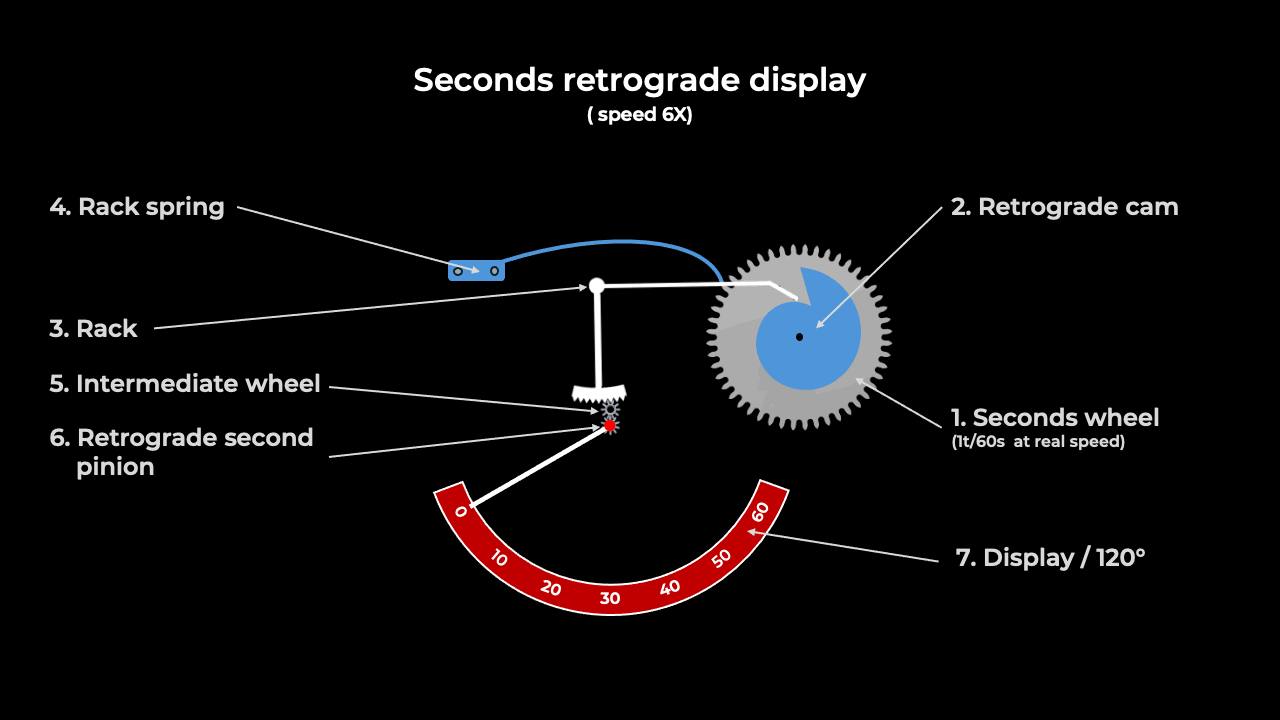RETROGRADE DISPLAY
Unlike a traditional analogue display, where the hand performs a continuous circular motion, a retrograde display indicates a value over only a segment of a circle.
Thus, when the hand of a retrograde display reaches the maximum value of its scale (e.g., the retrograde date hand on 31st July), almost instantaneously it returns in the opposite direction to the minimum value of its graduation (the 1st of August in our example).
The retrograde display can be applied to various indications such as seconds, minutes, hours, date, days, and more. It is therefore common to find several retrograde indications within a single timepiece.
This type of display allows information to be harmoniously distributed across the dial, often saving surface space in the process.

Whatever the function to be displayed, the kinematics of the mechanism begins with a rotating component, a star wheel turning at the reference speed of the indication in question.
For example, for a retrograde day-of-the-week display, this will be a 7-pointed star completing one rotation per week. For a retrograde date indicator, it will be a 31-pointed star turning once a month. And for a retrograde seconds hand, it will be the seconds wheel (1), completing one revolution in 60 seconds.
Whatever its function, this first kinematic element carries on its axis the retrograde cam (2), shaped like a snail shell.
Let’s imagine we want a retrograde seconds hand: the retrograde cam will therefore complete one revolution every 60 seconds. The feeler of the rack (3) is a lever that is held against the cam by a rack spring (4) or a hairspring. As the cam rotates, its shape causes the lever to move in a limited angular motion. Then, every minute, the rack instantly falls from the highest point to the lowest point of the cam. It thereby travels through the same angular value as during its forward progression, but in the opposite direction.
Opposite the pivot point of the rack is the toothed sector that gives the rack its name. This toothing meshes with the retrograde seconds pinion (6). An intermediate wheel (5) may be inserted between the rack and the retrograde pinion to reverse the direction of display, if necessary.
The angular travel of the rack, combined with the gear ratio between the rack teeth and the retrograde pinion, defines the angular span of the display (7).
